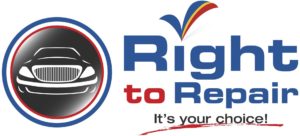Replacing parts can be a costly issue and since the new Guidelines for Competition in the South African Automotive Aftermarket (“the Guidelines”) were implemented, much positive progress has been made facilitating consumer choice and creating a more level and equitable trading environment.
Kate Elliott, CEO of Right to Repair, says one area of confusion which still persists however is the term “non-original spare parts” which is used in the Guidelines. These parts generally come with a more competitive price tag but are often misunderstood. The Guidelines definition for a non-original spare part says they are ‘Spare Parts that carry a Warranty from its manufacturer and are legitimate and traceable for sale in the aftermarket, but that are not Original Spare Parts. Non-Original Spare Parts exclude counterfeit Spare Parts.”
Elliott says that while the definition itself is not a problem, the term “non-original spare parts” on its own has come to have a negative association and to be thought of as unsafe and/or unreliable, and when was the last time you actually took the time to look up a definition in an Act? “We, at Right to Repair South Africa, would like to cut the confusion and help the consumer to understand which parts they should and should not use.”
“While there are of course second-rate parts out there in the market, not all “non-original” spare parts can be painted with the same brush. There are a whole host of options in-between which are perfectly safe and reliable to use, with a lesser price tag.” Elliott says the Guidelines refer to Original Parts being made by, or for, the Original Equipment Manufacturers (OEM’s) who are interpreted as being motor vehicle manufacturers. In reality the definition of “OEM” parts could be extended to include the aftermarket component parts manufacturers as well, as they are the originators of the parts which are manufactured, branded and sold in the market by the OEMs. These parts are either branded for the particular OEM and sold by the OEM’s dealer network, or are rebranded as aftermarket house brands. “It is the latter which is often referred to as a matching quality part or non-original part,” she says.
She says the easiest way to clear up the confusion is to use the term “Matching Quality Spare Parts” instead of “Non-Original Spare Parts” when referring to parts which, in terms of the Guidelines, are permitted to be used in lieu of original parts. Matching Quality Spare Parts, as the term suggests, refers to parts which have a traceable origin, are of matching quality and carry a warranty of their own. “This clearly excludes any “grey, counterfeit or illegally sourced” parts which place everyone at risk. It does however make way for consumers to source more competitively priced matching quality spare parts.”
In summary best advice from Right to Repair is:
- Don’t discount non-original spare parts. There are a whole host of quality affordable options available, it is simply important to ensure that when choosing a “non-original spare part, that it is a “matching quality spare part”.
- Never allow anyone to use parts in your vehicle that are classified as grey, counterfeit or illegally gained.
 ..:: AUTO REPORT AFRICA ::..
..:: AUTO REPORT AFRICA ::..




